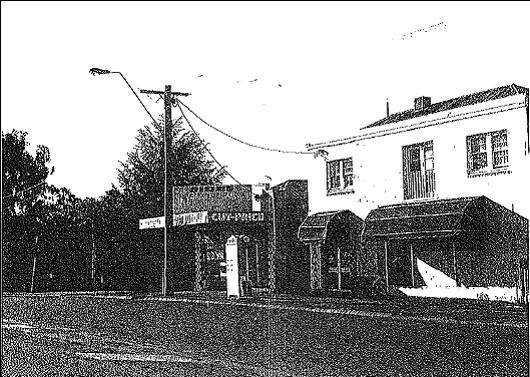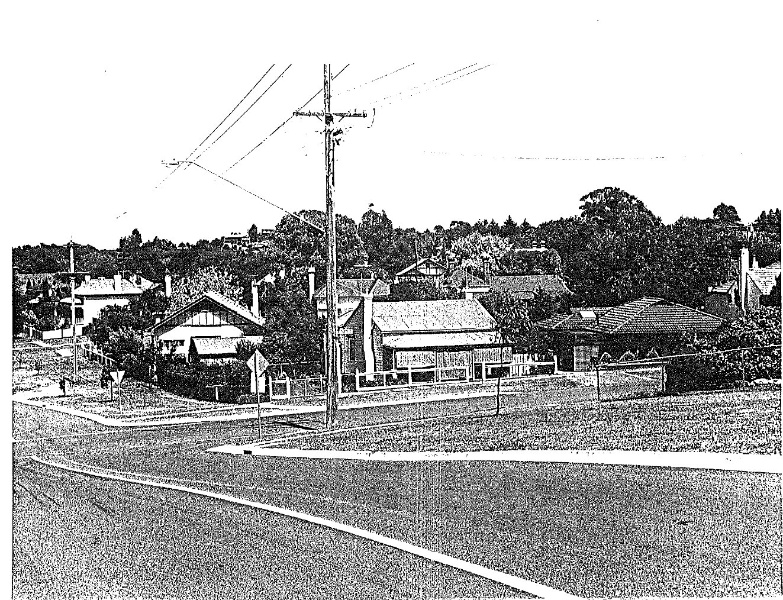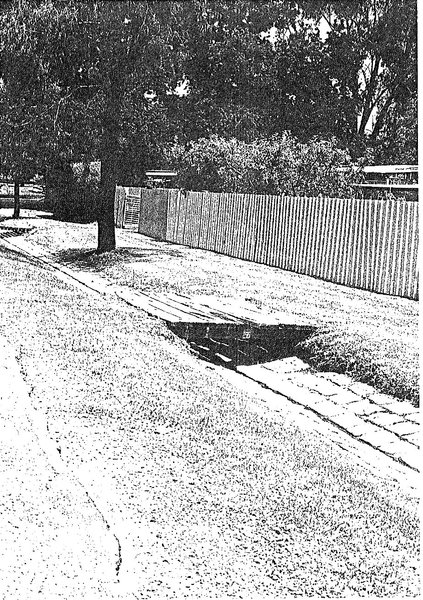ROWAN STREET PRECINCT
ROWAN STREET, DON STREET, MCKENZIE STREET, AND VINE STREET, BENDIGO, GREATER BENDIGO CITY
-
Add to tour
You must log in to do that.
-
Share
-
Shortlist place
You must log in to do that.
- Download report




Statement of Significance
Former Bendigo West & Golden Square Residential Precinct
This precinct contains some highly skilful designs and representative examples from the late 19th and early 20th century, marking the continuous prosperity of gold in that period. Intermixed are the gold sites themselves, with public buildings such as the Lutheran Church, showing nodes of early settlement. Apart from the buildings associated with the important gold era, there are the individually important sites and groups of sites which arose from the 1920s-30s. Many important figures also lived in the area such as Harkness, Paterson, Getzschmann and the safety fuse maker, Perry.
Most sites are offered picturesque hill side settings with sometimes steep hills providing unexpected views to neighbouring high ground and fine platforms for the social and public centres such as the Violet Street School.
Added to the setting are the mature elm plantings which extend off High Street, providing some of the more consistent plantings from the Victorian-era.
-
-
ROWAN STREET PRECINCT - Physical Description 1
Rowan Street Precinct:
Nearby is the Ironbark Township, now incomplete and intermixed with new unrelated development, but sufficient survives to recognize it as an old commercial centre. The historical focal point of this centre is 62 Eaglehawk Road, the old foundry which has served mining since the 1870s. In total contrast is the neighbouring house, Wetterau (c1894), built for a butcher and Bendigo mayor, Conrad Heinz, and sited next to what was probably a noisy industry in its hey day; another of the peculiarities of 19th century living.
Other commercial sites include 54 Eaglehawk Road, long held by the Roberts family. Before them Matthew and Elizabeth Jenkins ran it as a grocer's shop combined with a hairdresser. Further north is another former grocer's shop, occupied into the 1940s by William Anderson, but now a private house. These sites are considered notable because of the public role they have served over a long period.
Included in the Ironbark commercial precinct are a number of houses apparently mainly from the urbanization era of the 1860s- 1870s, some brick, some timber. Many are altered but some are individually notable, such as the altered row houses 27-31 and 57-59 Eaglehawk Road, the former for their unusual form (in the Bendigo and Eaglehawk context).Former Bendigo West & Golden Square Precinct
Good residential streetscapes concentrate around Honeysuckle, Rowan, Mackenzie, Violet and Old Violet Streets, the hilly terrain in areas to the north of the precinct creating added usual interest by unexpected combination of house forms, street angles and stepped siting caused by the rising ground.
The housing stock itself is dominantly late 19th early 20th Century and on many occasions timber, This is the precinct's character, but intermixed are earlier houses such as the individually significant 62, 63 Rowan Street or the altered but typical 53 Shamrock Street, an early brick structure. The house at 120 Lily Street is another early site, showing by its two major construction stages two periods of prosperity in Bendigo.
West End Hall (1868) is perhaps the best known residence in this precinct, being designed by the city's foremost architectural firm for one of its most successful mine owners, Barnet Lazarus.- Typically, his mine workings were diagonally opposite, now part of the Crown and adjoining the Australian Army property, Fortuna.
Non-residential sites include the important Lutheran church- school (1857- ) and manse at 110 Mackenzie Street (formerly extending to Rowan Street), Ray Raggatt's bakery at 132 Lily Street (now absorbed in a later structure).
Above them all, and culturally more part of the Ironbark community in the north, is the Violet Street School (1866, 1877) which, typical of the area's schools, creates a picturesque roofline at the highest point of the precinct.
Don Street is one of the precinct's more cohesive residential streetscapes; again, waining a little above Barnard Street, where the whole eastern side of the street was occupied with the Golden Gully United complex. Exceptions include the former ecclesiastical residence at the Barnard Street corner (206) and a number of small, possibly gold-related, timber cottages to the north (222?). However, at the High Street end of Don Street, where the old elm avenues which fan off north and south are perhaps at their best, is a group of more recent houses. Presumably positioned because of established trees, large lots and proximity to the city's main thoroughfare, the houses are large, of the 1920s-30s and surrounded by extensive gardens. Both the sites and the group are significance (121-125 Don Street).
At the other end of Don Street, individually notable sites include 223 (1897), 231 (1890) and 233 Don Street (1871). The first (223) was owned over a long period by Mary Carter, a draper, who appears to have operated her business from the house.
ROWAN STREET PRECINCT - Physical Description 2
Contributory Streets & Sites Rowan Street Precinct
Calder Highway
Eaglehawk Road
Webster Street
Contributory Streets Former Bendigo West & Golden Residential Precinct
Barnard
Booth
Don
Honeysuckle
Lily
Mackenzie
Nettle
Thistle
Vine
Violet
Wade
Webster
ROWAN STREET PRECINCT - Physical Description 3
Key Sites Rowan Street Precinct:
(Councillor) Heinz Wetterau, 60 Eaglehawk Road 1894
Osborne, Avard & Mitchell's Central Foundry, 62 Eaglehawk Road, 1872Row
Houses, 27-31 Eaglehawk Road, 1874
John Martin's house, 25 Calder Highway, 1864C
Key Sites Former Bendigo West & Golden Square Residential Precinct
Emily Wilkie House (c1919), 141 Don Street 1919-21
Margaret Barrass Estate's House, 189 Don Street 1922
Mary Carter House, 223 Don Street 1897
Charles Perry's House later St.Leonard's Private Hospital, 231 Don Street 1890
Robert Getzschmann's Braeside, 233 Don Street 1871-
Clark & Gwen Jeffrey's Bon Haven, later Banyan 17 Eaglehawk Road 1952-3 (not contributory to the overall
character).
Golden Gate Hotel, 118 High Street 1861
Richard McLoskey House, 120 Lily Street 1864CJoel
Horwood's Glendure House, 105 Mackenzie Street 1876
Lutheran School and Church, 110 Mackenzie Street 1857
Lutheran Manse, 110 Mackenzie Street 1870, 1872
Bible Christian Church and Hall, 168 Mackenzie Street 1874
Abraham Harkness House, 255 Mackenzie Street 1867 ?
Thomas Paterson's House, 320 Mackenzie Street 1864Oswald
Liddell's House (pyrites burner) 54 Nettle Street 1893
Reardon's Foundry Arms Hotel 2 Old High Street 1872-74-
Victorian Colonial Government's Violet Street Primary School No.877, Old Violet Street, 1866 House,
3 Reef Street 1860C
Primitive Methodist Parsonage, 57 Rowan Street 1875
Richard Gray's House, 76 Rowan Street 1893
Henry Carter's Bessbrook Villa, 48 Shamrock Street 1869-76
Alexander Bayne's Montanvert House, 84-86 Violet Street 1858-88
Heritage Study and Grading
Greater Bendigo - Eaglehawk & Bendigo Heritage Study
Author: Graeme Butler & Associates
Year: 1993
Grading:
-
-
-
-
-
BENDIGO TOWN HALL
 Victorian Heritage Register H0117
Victorian Heritage Register H0117 -
SPECIMEN COTTAGE
 Victorian Heritage Register H1615
Victorian Heritage Register H1615 -
BENDIGO LAW COURTS
 Victorian Heritage Register H1466
Victorian Heritage Register H1466
-
1 Brockenshire Street
 Yarra City
Yarra City -
1 Bundara Street
 Yarra City
Yarra City -
1 Forster Street
 Hobsons Bay City
Hobsons Bay City
-
-












